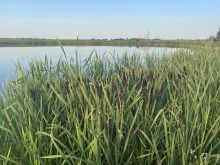OTTAWA – For higher yield in the forage field, scientists see a practical future in bacteria found on little plants struggling to grow above the permafrost in the high Arctic.
Years of research and testing have determined that two forage legume plants, sainfoin and cicer milkvetch, grow more plentifully in Canada’s cold climate when treated with the bacteria called Arctic rhizobia. These plants have the protein value of alfalfa, but not the bloat that alfalfa can cause in animals. They do not normally grow well in cold weather and researchers aren’t planning to use them to replace alfalfa or other forage crops.
Read Also

Europe holds promise for Canadian lentils
Pulse Canada is trying to help boost lentil consumption in Europe, which is already the fourth largest market.
“The next step is to modify the genes of Arctic rhizobia so that they will attach themselves to other agricultural legumes, such as alfalfa or the various beans and peas,” said microbiologist Danielle PrŽvost.
PrŽvost is an Agriculture Canada scientist at Ste. Foy, Que. The research aims to lengthen the growing season of legumes by improving plant growth in the cold springs and falls, and it’s hoped it will enable farmers to grow legumes in more northerly areas.
Rhizobia attach themselves to all legumes, penetrating their roots. They form nodules on the roots, where they convert nitrogen in the air into natural plant fertilizer.














